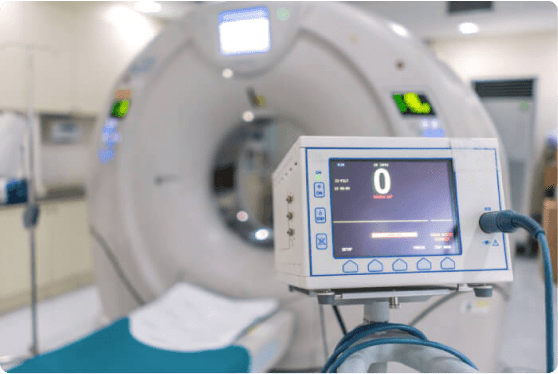CT Angiography vs Angiography: Which Is Better for Detecting Heart Blockages?

The Confusion Every Heart Patient Faces
If your doctor suspects that you have a heart blockage, one of the first things you will hear is: “Get angiography done.“ And why not? But here’s where the confusion starts: whether you should opt for a CT angiography or a traditional angiography?
Both tests sound similar, both detect blockages, and both involve imaging your heart’s arteries. Yet, their purpose, accuracy, and experience differ significantly. Understanding this difference can help patients make better, safer, and more cost-effective decisions.
This article explains what each test does, who should have which, and how cardiologists actually decide between the two, with real-world wisdom from clinical practice.
What Is Angiography?
Conventional Angiography, also known as Coronary Angiography, is the old–fashioned way of locating blockages in the arteries that surround your heart and lungs.
How It Works
-
A small tube (catheter) is inserted into the blood vessel, typically in your wrist or groin.
-
A dye that can be seen on X-rays is injected into the coronary arteries.
-
Real-time pictures of how blood flows in the arteries are obtained with continuous X-ray images (fluoroscopy).
-
That allows the cardiologist to see blockages, how much they impede flow, and what percentage of the vessel is blocked.
Why Is It the Gold Standard
Angiography is currently the most accurate test for measuring heart blockages, and it has a role as more than just diagnostic: If blockage is detected, the doctor can perform angioplasty or insert stents on the spot in the same procedure.
But it is invasive, requiring hospitalization, and comes with a small risk of complications, including bleeding or an allergic reaction to the dye.
What Is CT Angiography?
CT Angiography (Coronary CTA) is a noninvasive imaging test that uses CT technology and intravenous contrast dye to visualize the arteries of the heart.
How It Works
-
A dye is injected into a vein (commonly in the arm).
-
The patient is placed in a CT scanner, and high-resolution images of the coronary arteries are taken within seconds.
-
A computer then generates 3D images of the arteries from the data, helping doctors identify narrowing or plaque buildup.
Why It’s Becoming Popular
CT angiography provides a rapid, noninvasive alternative for patients who require a definitive diagnosis without catheter-related risks. It can be particularly useful for patients at low or intermediate risk of heart disease.
CT Angiography vs Angiography: Key Differences at a Glance
|
Parameter |
CT Angiography |
Conventional Angiography |
|
Type of Test |
Non-invasive |
Invasive |
|
Procedure Time |
10–15 minutes |
30–60 minutes |
|
Hospital Stay |
Outpatient (walk-in/walk-out) |
Requires admission |
|
Risk |
Minimal |
Slightly higher (due to catheter insertion) |
|
Image Detail |
3D anatomical view |
Real-time blood flow visualization |
|
Can it Treat Blockage? |
No |
Yes (can perform angioplasty) |
|
Best For |
Screening and diagnosis |
Definitive diagnosis + treatment |
|
Radiation Exposure |
Moderate |
Moderate |
|
Cost (India) |
₹8,000 – ₹15,000 (depending on hospital) |
₹15,000 – ₹30,000 (depending on hospital) |
When Should You Get a CT Angiography?
CT angiography is the preferred test for patients who:
-
Have few to no symptoms, but would like to screen for potential blockages.
-
A stress test that is equivocal or not definitive.
-
Are not prepared or medically suitable for invasive testing.
-
Would like an early screening to assess their risk of heart health.
It is a great tool for early detection, spotting plaque built up even before it forms a major blockage. In preventive cardiology, this makes CTA an invaluable step in lifestyle and treatment planning.
But if a blockage is already highly suspected or symptoms are severe, your doctor might bypass CTA and recommend traditional angiography to be sure you get diagnosed and treated more quickly.
When Is Conventional Angiography the Right Choice?
Conventional angiography is best suited for:
-
Patients with angina or established ischaemic heart disease.
-
Those with positive stress or 2D echocardiography tests.
-
Such patients include those with unstable symptoms, such as shortness of breath or dizziness on minimal exertion.
-
People who have significant, known blockages where intervention may be required.
Because this test can demonstrate blood flow in real time, it is often selected when prompt treatment may be needed.
The Doctor’s Perspective: How Cardiologists Decide
Many cardiologists adhere to a motto:
-
Use CT angiography to screen.
-
Confirm and treat with conventional angiography.
At locations like SAAOL Heart Center Delhi, physicians apply both modalities based on a patient’s profile, symptoms, and risk category.
For example:
-
A 45-year-old with slight chest discomfort and a normal ECG might be offered CT angiography instead.
-
A 60-year-old diabetic patient with repeated angina symptoms would probably head straight for classic angiography to determine the possibility of stent placement.
How Accurate Is CT Angiography Compared to Angiography?
CT angiography has an impressive accuracy rate of 90–95% for detecting coronary blockages. It’s especially precise in identifying:
-
Mild to moderate plaque formation
-
Arterial calcification
-
Early atherosclerosis
But traditional angiography still offers a greater window into function, revealing how blood is moving and to what degree fluidity is compromised.
So while CTA may be able to tell you that a blockage is there, angiography can tell you how much it actually matters. That’s why, in cases that are critical or have high levels of risk, cardiologists turn to angiography to plot interventions with exquisite detail.
Are There Any Risks Involved? CT Angiography vs Angiography
Both tests are usually safe when done under a doctor’s care. Nevertheless, they come with some risks:
CT Angiography Risks:
-
Mild allergic reaction to contrast dye
-
Slight radiation exposure
-
Rare chance of an irregular heartbeat during scanning
Conventional Angiography Risks:
-
Bleeding or worsening bruising where the catheter was inserted
-
Dye-related kidney effects (rare)
-
Low risk of infection or damage to the artery
Your doctor will consider your kidney function and history of allergies to help decide which test is right for you.
Patient Experience: What to Expect (CT Angiography vs Angiography)
For CT Angiography:
-
No hospital stay.
-
Fast, painless, and comfortable.
-
Results are generally ready in a few hours.
For Conventional Angiography:
-
Typically done in a cath lab.
-
Local anesthesia is used.
-
You may have discomfort as the catheter is placed.
A brief period of observation for up to a couple of hours following the procedure is recommended.
Patients often describe CT angiography as “an easy first step,” while angiography feels more clinical and procedural, but delivers instant treatment possibilities if needed.
Which Is Better for Detecting a Heart Blockage?
CT Angiography vs Angiography
The answer depends entirely on your condition and intent.
-
If you need a diagnosis: CT Angiography is quicker, simpler, and safer.
-
If you need diagnosis and possible treatment: Conventional Angiography is the go-to choice.
In short, CT angiography tells you the story; conventional angiography lets doctors rewrite it.
A smart approach is to consult a cardiologist who practices both preventive and interventional cardiology. This ensures the test chosen is tailored to your exact needs, not just your symptoms.
In heart centers such as the SAAOL Heart Care Delhi, non-invasive screening tools such as CT angiography are an integral core of a more overarching preventive care program that includes:
-
Zero-oil diet and lifestyle counseling
-
EECP therapy for improved circulation
-
Stress management programs
-
Regular cardiac monitoring
This forward-leaning strategy often finds risk in time to reverse or delay the progression of heart disease without undergoing surgery.
Conclusion
So, in comparing CT angiography vs angiography, don't view them as adversaries but as complements.
CT angiography provides clarity and ease. The confirmation and cure is given by conventional angiography. Neither one is better in the grand scheme of things; it’s simply a matter of what works new for your life.
So, before you make up your mind whether to get a test, discuss your symptoms with your cardiologist and decide which test aligns best for managing risk based on what you want to achieve in terms of heart health.
FAQs
1. Is CT angiography enough to detect all heart blockages?
CT angiography can detect most blockages accurately, especially mild to moderate ones, but conventional angiography is more precise for severe or complex blockages.
2. Does CT angiography replace the need for angiography?
Not always. CT angiography is diagnostic only. If treatment or stent placement is required, conventional angiography is still necessary.
3. Which test is safer for elderly patients?
CT angiography is generally safer and less stressful for elderly or high-risk patients since it’s non-invasive and quick.


